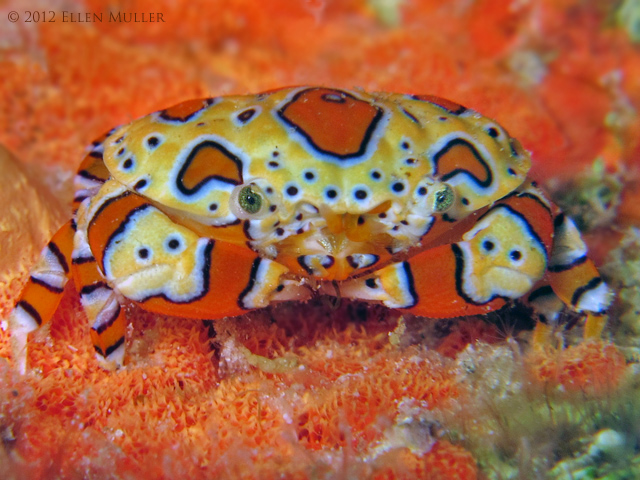
Platypodiella spectabilis Credit: Ellen Muller
With all due respect to Neoliomera, perhaps the most coveted carcinological treasure to be found on coral reefs are the Clown Crabs of the genus Platypodiella. Like a red and yellow Rorschach test, these diminutive invertebrates epitomize the visual splendour we associate with marine life. No two specimens ever share the exact same pattern, always showing some amount of variation in their spots and colors, like so many crustaceous snowflakes. The vibrant patterning isn’t merely for ostentation either, as these crabs actually sequester palytoxin, one of the most lethal poisons known in nature.
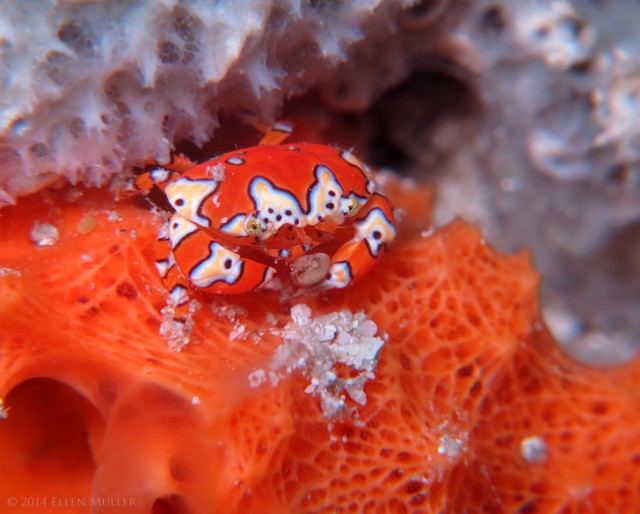
A sponge-associated specimen, reportedly feeding on a commensal zoantharian. Credit: Ellen Muller
In total, five species are described, split along the geographic boundaries of the major ecoregions of the Atlantic and East Pacific. The crab most likely to find its way into aquarium exports is the Caribbean P. spectabilis, known in field guides as the Gaudy Clown Crab. It can be found from Florida south to Brazil, the latter of which may represent an undescribed cryptic species. On the other side of the Atlantic, P. picta is recorded from tropical reefs along the West African coastline, while the recently described P. georgei hales from St. Helena. A pair of species are found in the East Pacific: P. rotundata along the Mexican coastline and the possibly conspecific P. gemmata from Panama to the Galapagos Islands, neither of which are well-documented in photographs.
These crabs have a fascinating ecological relationship with zoantharians, seemingly relying on them for both shelter and nourishment. Juveniles are reported to somehow settle into the internal cavity of their preferred host (Palythoa spp.), eventually burrowing beneath the colony as they mature into an adult 30mm in carapace width. This burrow and its small opening to the outside world is where this industrious fellow will call home for the remainder of its days.
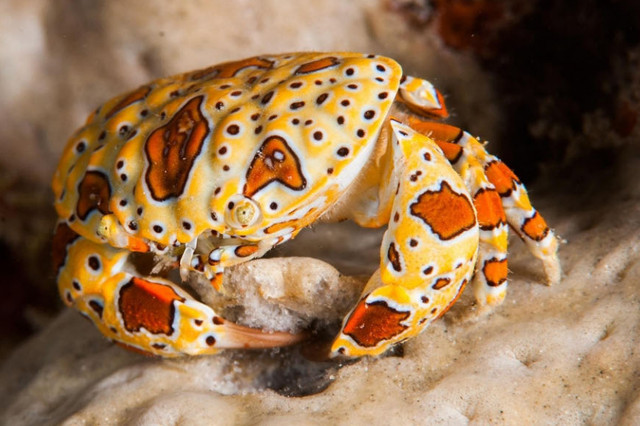
Picking apart its Palythoa host. Credit: Garcia-Hernandez et al 2014
There are, however, other places they are known to reside. One of the more interesting is their reported association with certain sponges (a ropelike grey sponge and the vaselike Niphates digitalis) which harbor an entirely different type of zoantharian, the commensal Umimayanthus parasiticus. Since these polyps don’t form any appreciable mat, the crabs instead burrow directly into the sponge, creating a small alcove from which they emerge at night to feed. There are further records from a yellow Parazoanthus, and even multiple instances of the Caribbean P. spectabilis from rubble and Halimeda habitats. Just how obligate their relationship with zoantharian corals is remains unstudied.
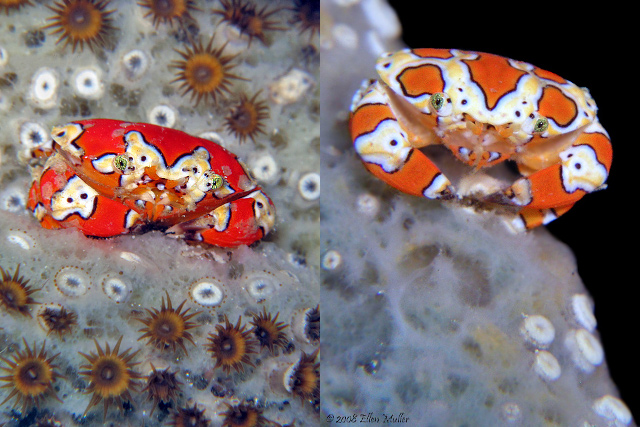
More sponge-associated specimens. Credit: Ellen Muller
Based on in situ photography, it appears that these crabs dine directly on their host, ripping apart polyps one at a time, and, in the process, obtaining the palytoxin which they so aposematically advertise in their bright colors. In the wild, where they tend to occupy large expanses of Palythoa, this is unlikely to due any real damage, but in the confines of an aquarium there is a much greater chance for their feeding to destroy any coral colonies within reach. Aquarium observations have also indicated opportunistic feeding on the anemone Bartholomea annulata, which might indicate the sort of broad corallivorous palate which would render this species undesirable in a reef aquarium.
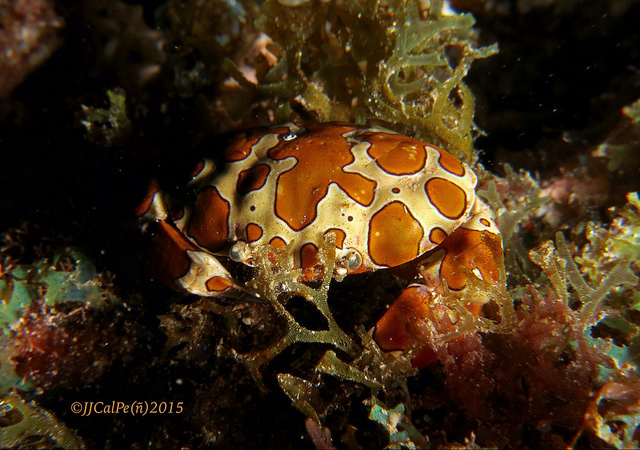
Not all specimens are found alongside zoantharians. Credit: JJCalPe(n)2015
But Platypodiella is still enough of a rarity in captivity that little of substance can be said on the matter. For those that have kept them, there doesn’t appear to be any great challenge in their husbandry, as these are reported to accept the typical crab diet of anything and everything. At least one aquarist reports that this crab brought about the demise of a zoa colony, so buyer beware. Still, I love the idea of unique biotope aquaria, and I can think of nothing quite so idiosyncratic as a small fish tank (say, a 5 gallon) covered in mats of Palythoa, with a resident Clown Crab to liven up the affair. Now if only I could find one…
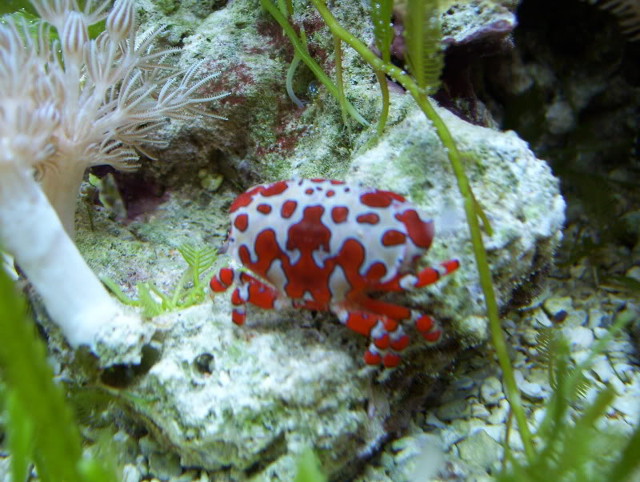
An aquarium specimen, which apparently arrived with a zoa colony. Credit: fishome25










Hi, do you have any of these clown crabs for sale
Hi! I have one Gaudí crab in my reef and it was feeding on my rock anemone as well as palythoas. He dealt quite a damage in the colony and in the anemone